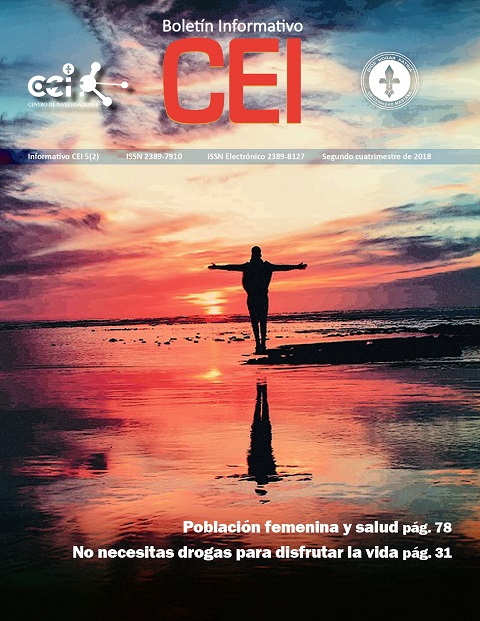Catalytic reduction of nitrogen oxides through the implementation of a filter
Abstract
The objective of the study was to evaluate the efficiency of the filter, based on the selective catalytic reduction technique, through the application of different elements (activated carbon, lime, urea, titanium oxide), which implemented under adequate conditions allow the retention and transformation from nitrogen oxides to simpler substances. the filter was adapted to a diesel engine present in the laboratory facilities of the Mariana University Alvernia headquarters; two possible scenarios were selected, the first, where the flow stop is completely open, in order that the concentrations shown in the bacharach are stabilized and the obtained data is recorded; the second, where the stopcock of the filter for the measurement is completely closed, allowing the flow to be directed towards the filter where all the filtering materials are. Finally, the bacharach instrument already calibrated is introduced and the measurement is carried out, in the same way as in the first measurement; the respective tests were carried out and a reduction of NOx was obtained in the environmental impacts to the atmosphere that can be generated by the internal combustion of mobile and fixed sources.
References
Chatterjee, D. y Dasgupta, S. (2005). Visible light induced photocatalytic degradation of organic pollutants. [Figura]. Photochemistry Reviews, 6, 186-205. https://doi.org/10.1016/j.jphotochemrev.2005.09.001
Fernández, P. y Araya, J. (2012). Tecnologías de reducción de Emisiones de NOx. Caso: Uso sistema de Reducción Catalítica Selectiva (SCR). New Better, 32, 1-7.
Peralta, M. (s.f.). Eliminación de contaminantes de gases de escape de motores diésel (tesis doctoral). Universidad Nacional de Litoral, Argentina.
How to Cite
Downloads
Downloads
Published
Issue
Section
License

This work is licensed under a Creative Commons Attribution 4.0 International License.

Boletín Informativo CEI by Universidad Mariana is distributed under a Creative Commons Attribution-NonCommercial-NoDerivatives 4.0 International License.




